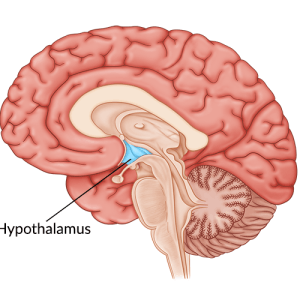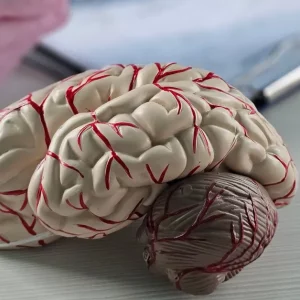Blast-induced traumatic brain injuries can cause more complex and dangerous symptoms than brain injuries caused by car accidents and sports injuries. However, treatment for brain injuries caused by explosions remains the same as treatment for other types of brain injury.
In this article, you will learn more about blast-induced traumatic brain injuries and what to do if you or a loved one experiences one.
What Is a Blast Injury?
A blast-induced traumatic brain injury is caused by a complex pressure wave generated by an explosion. During an explosion, a compression of air forms in front of a blast wave, which heats and accelerates the movement of air molecules.
This phenomenon, called blast overpressure, causes an instantaneous rise in atmospheric pressure that is too high for the human body to withstand.
A blast injury can cause life-threatening injuries and can affect multiple organs, including the brain. The brain is particularly vulnerable to blast injuries because of its delicate composition.
The severity of a blast-induced traumatic brain injury depends on several factors, including the type of explosion (nuclear, mechanical, or chemical), the distance between the victim and the explosion (including any protection the victim had), and the mechanism of the blast injury.
In the following section, we’ll discuss the various ways individuals may experience TBI after a blast injury.
Blast Injury Mechanisms
There are four basic mechanisms of blast-induced traumatic brain injuries that a person may experience:
- Primary blast injuries. This refers to the immediate injury to tissue as a result of the explosion itself. Organs surrounded by fluid such as the brain and spinal cord are especially susceptible to a pressure wave from a blast. The pressure wave can cause axonal injury, a breakdown of the blood-brain barrier, and brain contusions. Within a few days of a blast, an increase in intracranial pressure can build and lead to life-threatening conditions.
- Secondary blast injuries. These result from fragments flying through the air after an explosion. Secondary blast injuries are more common than primary, and a seemingly small wound can hide a more devastating injury underneath.
- Tertiary blast injuries. This occurs when the victim is thrown through the air into something solid, or when a structure collapses and injures a person. These injuries can cause blunt force trauma to the brain similar to the type of brain injuries seen in car crashes.
- Quaternary blast injuries. These include a variety of injuries resulting from exposure to fire, fumes, radiation, biological agents, smoke, dust, toxins, environmental exposure, and even the psychological impact of an event.
All four mechanisms can occur simultaneously, leading to complicated and sometimes life-threatening circumstances.
Categories of Blast-Induced Traumatic Brain Injuries
Blast-induced concussions can be divided into three categories, depending on the severity of the injury:
- Grade 1. Confusioned state. The person has not lost consciousness and there are no gaps in their memory, but they are not following what is happening.
- Grade 2. Presence of post-traumatic amnesia and classic symptoms of concussion – such as dizziness, headache, and nausea – for at least 15 minutes.
- Grade 3. Loss of consciousness.
For more severe blast injuries, doctors will most likely use the Glasgow Coma Scale (GCS) to assess patients.
The GCS consists of 15 points total, with points used to measure various functions such as eye-opening and verbal response.
Based on the number of points a person scores on the test, doctors will classify patients into four groups:
- Mild TBI: GCS score = 13-15 pts
- Moderate Disability: GCS score = 9-12 pts
- Severe Disability: GCS score = 4-8 pts.
- Persistent Vegetative State: GCS score = 3 pts.
The higher the points, the higher likelihood of making a full recovery.
Signs and Symptoms of Blast-induced Traumatic Brain Injuries
During World War I, British doctor and psychologist Charles Myers noticed that soldiers exposed to explosions on the battlefield all displayed similar signs and symptoms. Some of the signs and symptoms that Myers observed include:
- Tremors
- Facial spasms
- Mood swings
- Inability to walk
- Sluggish reflexes
- Breathing difficulties
- Double vision
- Memory problems
In addition, compared to soldiers with non-blast-related TBIs, soldiers exposed to explosions were more irritated by sudden loud noises and experienced more emotional and physical exhaustion.
This led Myers to coin the term “shell shocked” to describe the combination of symptoms seen in blast victims. Today, shell shock is known as PTSD.
Myers and most doctors at the time considered shell shock to be a purely psychological disorder. However, today’s science has shown that these symptoms primarily result from physical changes in the brain.
Up next, we’ll discuss treatment interventions for blast-induced traumatic brain injuries.
Want 20 pages of brain injury recovery tips in PDF form? Click here to download our free ebook “15 Things Every TBI Survivor Must Know” (link opens a pop up for uninterrupted reading)
Treating Blast TBIs
While blast-induced traumatic brain injuries are unique in their mechanisms of injury, the brain recovers and heals similarly to all other brain injuries. Similarly to other TBI patients, an individualized rehabilitation program will stimulate the brain to heal itself.
A key part of TBI rehabilitation for blast victims will involve activating the brain’s natural repair mechanism, neuroplasticity.
Neuroplasticity is the brain’s ability to create new neural pathways. These pathways allow undamaged portions of the brain to take over functions from injured areas. This is how brain injury survivors can regain abilities even years after their injury.
Why Exercise is Crucial for Recovery
The best way to stimulate neuroplasticity is through repetitive activity. The more you exercise your hand, for example, the more your brain will lay down new neural pathways in response. As these pathways become reinforced through practice, your hand function will improve.
It can be boring to do the number of exercises needed to activate neuroplasticity on your own. Fortunately, there are home therapy devices, such as MusicGlove, which is clinically proven to improve hand function in two weeks.
The magic of MusicGlove is that it is fun to do hundreds of exercises because it is an engaging music game. You are motivated to continue moving much more than traditional therapy.
MusicGlove is covered by the Department of Veteran Affairs. This means, if you have ever served in the U.S. military, you can get a MusicGlove free of charge.
Understanding Blast-Induced Traumatic Brain Injuries
In many ways, blast injuries are more complex than other TBIs. But when it comes to treatment, the principles remain the same.
Even though the symptoms of blast-induced brain injury can be debilitating, the brain is a remarkably adaptive organ. By activating neuroplasticity through therapy, you can give yourself the best chance at making a functional recovery.









